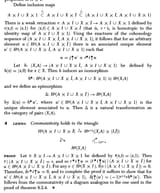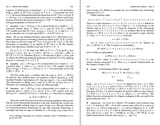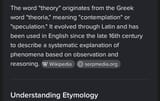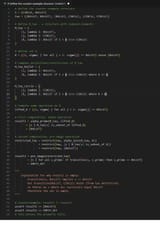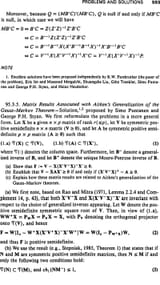>>519029058
Because let's say you have the sets {1} and {2,3}. Neither is a subset of the other. Yet you want to compare their sizes. {1} has an element that {2,3} doesn't have and {2,3} has elements that {1} doesn't have. So "has selements other doesn't have" doesn't make one larger than another.
>>519028975
It's important to note however that size in set theory is very different to size in real life, because in real life size is about the object itself, while in set theory "size/cardinality" is not an intrinsic notion but rather a statement about what kind of functions there are between sets.
It's not enough for me to know the set X to know its size, I have to also know what kind of functions there are to and from X in the set theoretic universe to determine its size.
In advanced set theory you do forcing where you keep the set the same but basically add or remove functions to and from it, changing its size, or forcing its size to be one thing rather than another.
So for example with forcing you can change the set theoretic universe to make the cardinality of the reals to be omega_1, or omega_2, or omega_42, whatever you want, basically by adding what kind of functions there are in the universe.
There are intrinsic properties in set theory which are called absolute, and don't change as you expand the model. So for example being of size 3 is an absolute property. But for infinite sets it's very different, cardinality is no longer absolute. So "the set X is countably infinite" could be false in one universe and true in an expanded universe.
This is why I kinda dislike calling cardinality "size" or "how big a set is", because it's really not just about the set, just as important are the kinds of functions there are in the universe, i.e. how rich or poor the universe is.
 10/16/2025, 1:32:57 PM
No.519027897
>>519027953
>>519027980
>>519028051
>>519028116
>>519028206
>>519028361
>>519028446
>>519028966
>>519029004
>>519029283
>>519029350
>>519029439
>>519029527
>>519029638
>>519029872
>>519029904
>>519030113
>>519030158
>>519030300
>>519030391
>>519030392
>>519031156
>>519031198
>>519031422
>>519031691
>>519031788
>>519031954
>>519032222
>>519032343
>>519032597
>>519033041
>>519033332
>>519033838
>>519034715
>>519034939
>>519035030
>>519035183
>>519036660
>>519038957
>>519039210
>>519039396
>>519041758
>>519041845
>>519042406
>>519043648
>>519044030
>>519045469
>>519048164
>>519048469
>>519048492
>>519050179
>>519051229
>>519051238
>>519052669
>>519052756
>>519054561
>>519054895
>>519056248
10/16/2025, 1:32:57 PM
No.519027897
>>519027953
>>519027980
>>519028051
>>519028116
>>519028206
>>519028361
>>519028446
>>519028966
>>519029004
>>519029283
>>519029350
>>519029439
>>519029527
>>519029638
>>519029872
>>519029904
>>519030113
>>519030158
>>519030300
>>519030391
>>519030392
>>519031156
>>519031198
>>519031422
>>519031691
>>519031788
>>519031954
>>519032222
>>519032343
>>519032597
>>519033041
>>519033332
>>519033838
>>519034715
>>519034939
>>519035030
>>519035183
>>519036660
>>519038957
>>519039210
>>519039396
>>519041758
>>519041845
>>519042406
>>519043648
>>519044030
>>519045469
>>519048164
>>519048469
>>519048492
>>519050179
>>519051229
>>519051238
>>519052669
>>519052756
>>519054561
>>519054895
>>519056248
